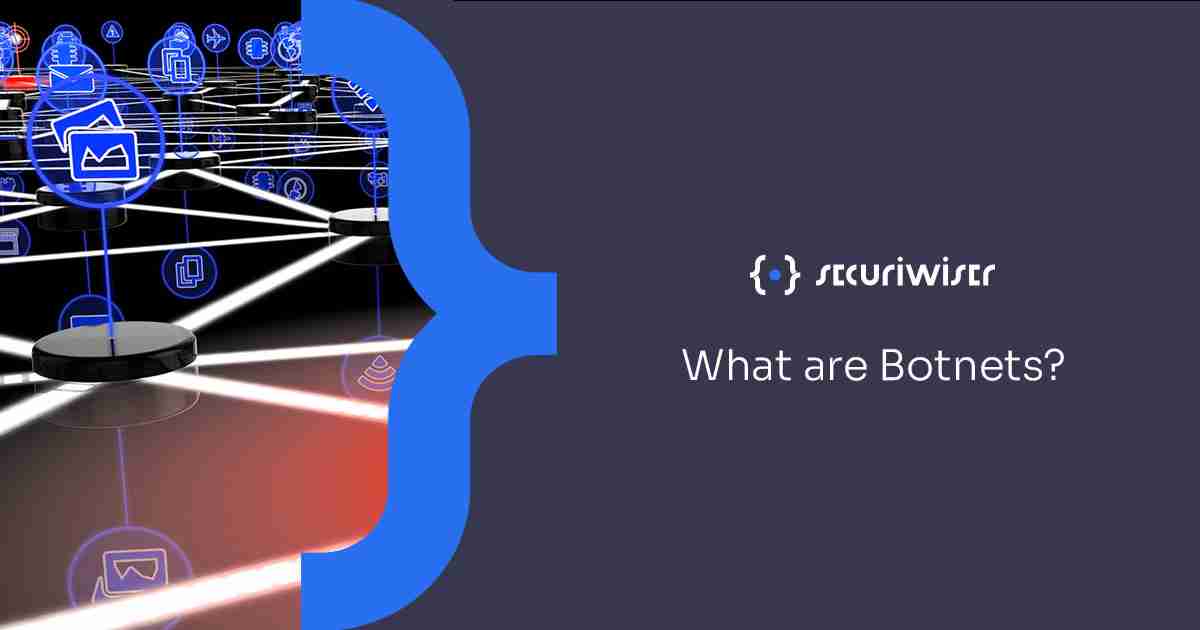
Simply put, a botnet is a collection of computers which have been infected with malware that allows them to be controlled remotely by a malicious third party. However, in the context of cybercrime and malware, a botnet is a hacking construct which has risen to prominence and is emerging as a ‘hacker’s weapon of choice’ when performing a cyber-attack.
The essence of botnets relies on the construction of a large network of infected computers which can then be focalized on performing a larger scale cyber-attack. The most effective botnet networks are comprised of computers which have been infected (usually by a malicious download) but remain undetected to the user. Subsequently, once a device has been infected, the malware will be tailored to run at a certain capacity as to not throttle the user’s computer usage to the point of detection – ensuring the device can remain a component of the botnet network indefinitely.
Botnet attacks
Once a botnet is established, a hacker can carry out an array of attacks that would otherwise be much harder to perform from a single device. These can include:
Distributed Denial of Service (DDos) attacks
An attack in which the botnet distributes an overwhelming number of requests or queries to a website or network resulting in crashes, and denying the service or resource.
Phishing
Depending on the size of the botnet, they can be extremely effective at distributing spam or malware via phishing scams.
Generating fake advert revenue
The bots can be used to generate mass traffic to websites which pay for advertisement engagements or clicks
Snooping
Botnets can be set to monitor online traffic, gathering IP addresses and snooping on engagements or sensitive information
How botnets can affect your business
A lot of businesses may be under the assumption that because they don’t operate within the cyber domain, they are not at risk of being affected by botnets and other online threats. In actuality, bots make up around half of the traffic on the internet, so if a business has any online presence at all, they are at risk. Here are just a few ways how a botnet can pose a risk to any business with online vulnerabilities:
Affecting the performance of the site/service
If the site receives too much traffic at once, particularly bot traffic, the performance and speed will be heavily impacted. Not only can this deter users from interacting with the site if it is running slowly and providing them with a difficult experience, it can also completely deny users access to the services by crashing the site.
Affecting the analytics
Many businesses rely on an online presence for marketing and advertising purposes, but if the site is being spammed with bot traffic, any conclusions drawn from analytics cannot be relied on to be accurate
Theft of credentials or sensitive information
As previously mentioned, botnets which exploit a vulnerability and infect a network or website can monitor its traffic, gather IP addresses and even retain sensitive information such as user’s log-in credentials and passwords. This could substantially affect the integrity of the business and drive away existing customers.
Cost
The threats to businesses online may vary depending on the vulnerabilities and circumstances. However, at the core of the issue is the effect on income and expenditures. Whether this manifests as bots skewing analytics and derailing advertising campaigns, taking down websites that customers use to purchase services incurring in financial losses, or even potential data leaks in which the business is held liable for the damages, if a business is vulnerable, it is going to cost.
How you can protect your business against botnets
Despite all the risks, there are plenty of ways to keep your business safe and thrive online. Here are a few steps you can take to protect against botnets:
Up-to-date Antivirus
This should scan the network regularly, removing any existing malware and then continuing to prevent further breaches
Online Awareness/Training
Companies and businesses should ensure that all employees are aware of cybersecurity threats posed by phishing scams or malicious downloads, and only safe links and trusted downloads are performed on devices.
Keeping the System updated
Not only should user passwords be sufficiently complex (e.g., not pass1234) and routinely updated to harbor against potential data leaks, but the operating system should be upgraded as soon as a new iteration is released. The newer the model, the less inclined a hacker will be to target it as the existing one’s vulnerabilities will have already been identified.
Securiwiser can help your business stay safe in the cyber world via its daily monitoring of cyber threats, including those raised in this article. Start your free trial today by clicking here.
Previous Article
What is the CIA Triad?Next Article
The Different Types of Threat ActorsHow secure is
your school?
Blog categories
How secure is
your school?